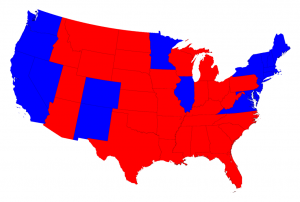 The Trump presidency could have one significant silver lining in the fight against climate change. With most federal action likely to be negative on climate, it will motivate states and cities to take the aggressive action needed to curb emissions through innovation. Gone now is the fiction that the federal government will take the steps necessary to address the full scale of the challenge.
The Trump presidency could have one significant silver lining in the fight against climate change. With most federal action likely to be negative on climate, it will motivate states and cities to take the aggressive action needed to curb emissions through innovation. Gone now is the fiction that the federal government will take the steps necessary to address the full scale of the challenge.
Of course, the Obama administration helped in critical ways, such as through stringent fuel economy standards and boosting investment in solar panels and electric vehicles, among other needed technologies. The Clean Power Plan, likely to be killed soon by Trump’s EPA, was a decent start but not nearly sufficient for what scientists say is needed to avert the worst impacts of climate change. But given federal politics, none of these steps were likely to be sufficient on their own.
So now is a good time for the “coalition of the willing” of states and cities to see what they can do on their own, without the political drag facing federal action. The California-led Under 2 Coalition is a good example of this collaboration at the international level among subnational jurisdictions willing to take strong action.
Here in the U.S., states could do a lot together, such as creating a common carbon market through cap-and-trade, jointly investing in clean technology research, and sharing grid resources to encourage more renewable development at a cheaper cost and with fewer emissions.
But there are constitutional limits to multi-state action. My Berkeley Law colleague Dan Farber describes these limits on Legal Planet, and he remains mostly optimistic about what states can do together while passing constitutional muster:
There are some legalities that have to be observed in designing regional efforts. The biggest issue is whether Congressional consent to a regional agreement is required under the compact clause, which provides that “No State shall, without the Consent of Congress . . . enter into any Agreement or Compact with another State, or with a foreign Power.” This language might seem to require congressional consent to all forms of cooperation between states. Fortunately, the Supreme Court has interpreted the compact clause quite narrowly.
Basically, states want to avoid having to get congressional approval for their multi-state actions, given the negative politics at the federal level. But, as Dan summarizes, as long as states create multi-state programs that aren’t binding on individual states, create superseding regulatory power, or negatively impact federal actions, they can proceed without congressional approval.
It actually gives states lots of leeway, which they should start using as soon as possible.
One thought on “What Are The Constitutional Limits On Multi-State Climate Coalitions?”
-
Pingback: Today’s Headlines – Streetsblog California
Comments are closed.


